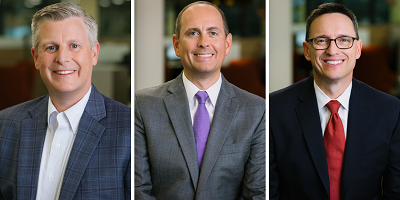This article was originally published March 19, 2019, on AL.com.
“To know the true reality of yourself, you must be aware not only of your conscious thoughts, but also of your unconscious prejudices, bias and habits.” ~Anonymous
We all have unconscious bias
The buzz around unconscious bias has grown at a rapid pace throughout organizations around the globe. Unconscious biases are social stereotypes about groups of people that individuals form outside their conscious awareness. We all have bias. Bias does not take special effort to acquire. Without even realizing it, each of us carries within ourselves a lifetime of experiences and exposure to cultural norms, attitudes and beliefs about everything from social class, universities and neighborhoods to more visibly distinguishable traits such as age, race and gender. Unfortunately, many of the stereotypes that we have about groups outside of our own tend to be more negative than the stereotypes we would associate with those we perceive to be in our own group, resulting in erosion of trust and lack of confidence in people who are different than us. The social environment today has heightened our awareness of biases in the workplace yet, as leaders, many of us avoid engaging in conversations about bias. If we avoid recognizing, confronting and discussing our biases, how will we ever level the playing field and create environments where everyone has the opportunity to succeed?
Knowledge is power
To begin to understand unconscious bias, it’s helpful to think about an iceberg – what you see above the water line is one thing, but what’s underneath may be entirely different. Each of us has visible traits that are on display for everyone to see, and we each also have traits, experiences and beliefs that are below the waterline, which we may or may not choose to reveal. Imagine if people only relied on what they saw above the waterline to inform their view of you, allowing unconscious bias to fill in the rest of the story. Imagine what it is like if you’re not comfortable revealing what is below your own waterline. At Protective, we’ve begun a journey to understand how unconscious bias can impact our culture and our effectiveness as leaders. This past summer, our senior leaders dedicated time to learn about unconscious bias. The dialogue our team had, although uncomfortable at times, created the recognition and desire to understand other perspectives – ultimately breaking down barriers and encouraging diversity of thought. A tool to begin to uncover our own biases is the Harvard Implicit Association Test (IAT). The results may surprise you.
Bias is a leader’s Achilles’ heel
Unconscious bias can be crippling to an organization’s ability to move forward – vigilance is required. It takes energy to hide below-the-waterline differences. This is energy that could be used to engage with others to solve complex problems, understand customer needs and deliver results. A leader’s role is to bring out the best in people to create an environment that embraces differences and leverages diversity of thought. To be strong leaders, we must confront our own unconscious bias. At Protective, we are focused on creating awareness and minimizing unconscious bias in order to develop more inclusive and diverse leaders. We expect our leaders to create an inclusive environment to develop talent, drive performance and achieve business objectives. We believe it starts and stops with leadership.
The journey
Through our learnings, we recognize this is a journey. As we work towards unpacking the unconscious bias within our organization, we are learning to step back to think about the other person’s perspective and voice. Be intentional about understanding what’s below the water line – ask questions, seek to understand and become an advocate. This shift will drive the behaviors needed to create an environment where inclusion drives diversity.
We are committed to an inclusive culture where all employees fully contribute and thrive. Doing the right thing and serving people are a part of our corporate DNA, and we believe that valuing and embracing differences is simply the right thing to do.
Wendy Evesque is Senior Vice President and Chief Human Resources Officer for Protective Life Corporation. She currently serves on The University of Alabama International Business Advisory Board and is the Board Chair for The Heart Gallery of Alabama. Ms. Evesque is an alumna of the 2011 Momentum Women’s Leadership Program and the 2014 Leadership Birmingham class.





 To exercise your privacy choices,
To exercise your privacy choices,